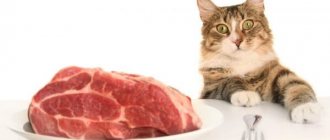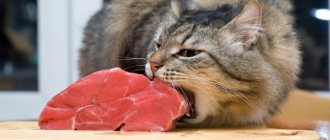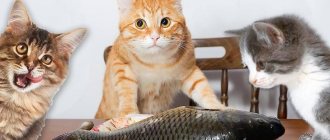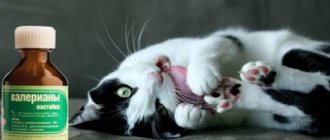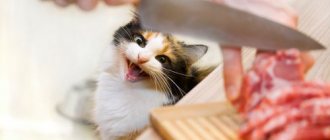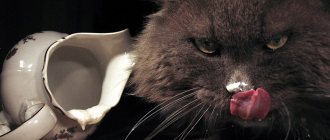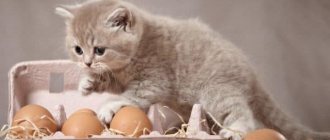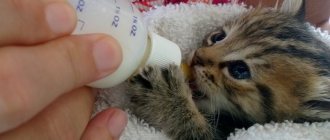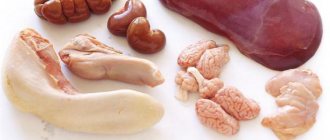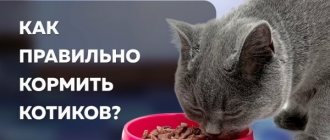When a cat appears in the house, the owner is faced with the acute question of what to feed the new family member. Some immediately try to accustom the cat to ready-made food that is sold in the store. Others try to provide their pet with a balanced diet from foods available on hand. But sooner or later, every owner of a mustachioed and striped pet involuntarily thinks about what is best to feed him. Is it possible to feed a cat raw meat? Will such an extremely natural product harm the health of the cat? What do veterinarians think about this?
What role does it play in a cat's diet?
Everyone knows that cats are predators. Therefore, raw meat for these animals is a natural and main component of the diet. The share of this product in the daily cat menu can reach up to 80%. Regular consumption of meat provides the cat with the necessary proteins and amino acids, which play a key role in the formation of the bone skeleton and muscle tissue.
Is it worth feeding a cat raw meat? Many owners are interested in it.
Their deficiency, especially taurine, can cause serious health problems and can lead to:
- blindness;
- deterioration of wool quality;
- baldness;
- heart failure;
- disruption of the normal functioning of the endocrine system.
For your information! Some breeders try to compensate for taurine deficiency by including foods rich in plant protein in the cat's diet. However, it should be noted that in protein foods of plant origin there is either no taurine at all, or it is found in negligible quantities.
What cereals can be given to kittens?
The list of healthy cereals includes:
- buckwheat;
- oatmeal "Hercules";
- corn grits
; - rice.
Interesting materials:
What does turnkey apartment renovation include? What does living space maintenance include? What does the standard of care include? What does the battle plan include? What is included in lease payments? What is included in revolving funds? What influences staff turnover? What is awarded upon completion of graduate school? What does a regional operator do to manage municipal solid waste? What is grown in the fields of Ukraine?
Safe types for cats
Is it possible to feed a dog raw meat or is it better to cook it?
Many people will be interested to know which meat is most suitable for a fluffy, which type of meat should be given with some restrictions, and which meat product should be completely abandoned.
Lean beef
Lean beef contains the highest amount of protein and taurine. This is the meat that should be preferred. In addition, beef has virtually no fat, which is bad for the digestive system, especially the liver.
Lean lamb
You can diversify your cat's diet by adding lean lamb. Just like beef, lamb can be offered to your pet in small portions daily.
Rabbit meat
Rabbit meat is ideal for those cats that are weakened, are going through a period of recovery from illness, or are obese. Being hypoallergenic, soft, with a loose fibrous structure, it is perfectly absorbed by the cat's body.
Not all meat is equally healthy for cats
Chicken meat
Chicken is an excellent choice for feeding your pet, provided it is of high quality. Low-quality chicken, containing hormones and antibiotics, can significantly harm the cat.
Important! Bones should be removed from chicken meat. That is why you should give preference to chicken breast. In addition, you should not give your cat chicken skin, which may contain an increased concentration of harmful substances.
Turkey
Like chicken, turkey meat is hypoallergenic and ideal for cats. In this case, its quality is of key importance. You should not buy meat in thermal packaging, as in this case it will be extremely difficult to assess its condition. In addition, turkey meat, like chicken, may contain hormones and antibiotics that were used in the process of raising poultry on a farm.
Note! Veterinarians recommend feeding your cat turkey, alternating with lean lamb.
By-products
Tailed pets will quite like offal - liver, lung, tripe, heart, kidneys. In addition, their benefits for the cat’s body are undeniable, since they contain iron and fat-soluble vitamins A and D, which the cat’s body needs. However, it is not recommended to give offal to cats every day. Two or three times a week in portions of 50-70 g will be enough.
Raw fish
Experts do not recommend giving raw fish to your cat, as there is a high probability of the animal becoming infected with helminthiasis. It is best to offer your pet heat-treated fish in a portion of no more than 150-200 g per week.
Important! If raw fish, especially lake or river fish, is still present in the cat’s menu, anthelmintic measures should be carried out regularly.
Features of feeding poultry meat
It would seem that in nature cats eat birds, and if you feed your pet bird meat, no problems should arise. This is absolutely true for turkey and quail meat, but with chicken it can be difficult.
Chicken meat is a fairly strong allergen, so it should be used with caution in cat food. Typically, signs of food allergies in kittens appear at an early age. However, they can also occur in an adult pet. This usually manifests itself in the form of redness of the skin, increasing itching, and hair loss.
Whether it is possible to give a cat raw chicken meat or not is determined by the owners only by experience. If the animal does not have allergic reactions, well-beaten chicken throats can be given to clean the teeth once a week.
What is the best way to feed meat?
Is it possible to feed a cat dog food - wet or dry and what is the difference?
Despite the fact that raw meat is one of the main components of the cat's table, it must be given wisely. If you neglect the rules developed by specialists, you can get serious problems in the form of helminthiasis or infectious diseases. List of useful recommendations:
- before offering a raw meat product to your pet, it should be frozen in the freezer for at least 3-4 days;
- meat for cats should be cut into small cubes or ground into minced meat;
- You should not give your cat frozen or cold deli meat, as the cat may catch a cold or damage its tooth enamel. Before serving, it must be defrosted to room temperature;
- raw meat for cats should not contain any spices or salt.
Raw meat dishes should not contain salt or spices
Fish on the cat's menu
The prevailing stereotype that cats eat a lot of fish is absolutely not true. In the natural environment, cats have virtually no opportunity to catch fish.
Domestic cats are often given fish, and this is wrong. All types of river fish are not suitable for cat food: they are very bony and contain many parasites.
You can offer your cat some boiled and boned sea fish. Fatty varieties should also be excluded; excess animal fat will lead to kidney problems in the animal. Also, sea fish contains a small amount of salt, which is contraindicated for cats.
When deciding whether it is possible to give your cat raw meat and fish, the clear choice is made in favor of meat, and the fish must be boiled. You should treat your pet to boiled and deboned fish no more than twice a week. Occasionally, you can pamper your cat with boiled shrimp, after clearing them of their shell.
What meat should be excluded from a cat's diet?
Is it possible to feed a cat both dry and wet food at the same time: examples of mixing
Offering fatty meat to your sofa pet is a very bad idea, as it can negatively affect the digestive system. We are talking primarily about the following varieties:
- pork;
- lamb (fat parts of the carcass);
- duck and goose;
- ready-made minced meat from the supermarket;
- large bones.
Important! Being fragile and brittle, the tubular bones of a bird can damage the internal digestive organs of a cat. Therefore, you should carefully ensure that they are not in your pet’s diet.
Is it possible to combine raw and cooked meat?
Why do experts insist that raw and cooked meat should not be combined? As an argument, they cite the fact that in the process of digesting thermally processed and raw meat, completely different enzyme groups are involved. Thus, the process of digesting food with different cooking methods can be difficult.
Raw meat should not be offered to a cat at the same time as cooked meat.
Why is the raw product dangerous?
Despite the obvious benefits of raw meat product, it can significantly harm the animal. The main danger is that raw meat can become a source of helminth infection for your cat. Among them may be those that can literally kill a pet in a very short time. To make meat suitable for an armchair predator, you need to perform a few simple steps:
- You should choose fresh, lean meat.
- Remove all potentially dangerous long bones.
- Cut into small pieces no larger than 1 cm.
- Pack the pieces into portioned bags.
- Place in the freezer for 3-4 days.
Note! Any fresh meat is absolutely not suitable for animals.
Deep freezing of the product has a detrimental effect on the eggs and larvae of worms. Therefore, after several days in extreme cold, the meat is considered suitable for raw consumption.
The main harm that chicken or turkey can cause to a purr is the hormones and antibiotics it contains. Therefore, the main task of the cat owner is to maximize the removal of potentially harmful substances from the “bird gifts” that the cat receives in its raw form. First of all, you should remove the skin from a piece of meat and put it in warm water for several hours, changing it with fresh water from time to time. Thanks to this, the concentration of harmful substances in the meat will significantly decrease, and it will be ready for consumption. In addition, it is not recommended to store poultry meat for a cat for future use.
Can a spayed or neutered cat be given raw meat?
The behavior of spayed or neutered cats is significantly different from the behavior of animals that have not undergone surgical interventions. The metabolism of pets who have undergone surgery slows down significantly, they become lazy, imposing, and therefore prone to obesity. In addition, due to stagnation of physiological fluids in the body, there is a risk of developing urolithiasis. In this case, the mustachioed pet's diet should consist of equal parts of proteins and carbohydrates/fiber/fats.
Note! If the fluffy eats natural food, then regular feeding with a raw meat product will fully satisfy its special nutritional needs. However, you should consult a specialist about combining dry industrial food and raw meat.
Your cat's diet should be balanced and healthy.
Is it possible to feed a cat only meat?
If you give your cat only raw meat, sooner or later this will seriously undermine its health. The fact is that excessive protein consumption can disrupt the normal functioning of the kidneys and have a detrimental effect on intestinal function. Your pet's diet must be balanced and rich in vitamins and microelements.
Is it possible to give a cat raw meat? The answer is yes. And even necessary. However, the owner should arm himself with knowledge and common sense so as not to harm his mustachioed pet.
Questions and answers on natural feeding of cats
- Is it possible to feed cats cereal?
No you can not. Not in any quantity. The cat is an obligate predator with protein-fat metabolism. Her body lacks an enzyme that breaks down carbohydrates. In the best case, the cereal will pass through in transit, significantly impairing the absorption of nutrients from other foods, and at worst, it will cause intestinal upset. As for the popular question “What about the grains in the stomach of a mouse?”, then, firstly, rare mice feed exclusively on grain, and secondly, the contents of the mouse’s stomach are already fermented (but not cooked!) and make up a tiny part of its volume.
- To cook or not to cook?
Do not cook. The cat should eat only raw foods. Even with slight cooking, the meat is depleted in the composition of useful elements, and the protein turns into a difficult-to-digest form. Boiled or fried bones are not only indigestible by the cat, but are also likely to cause intestinal obstruction.
- Meat with or without bones?
Bones are a necessary product in a cat's diet. This is a source of calcium. In addition, when a cat chews bones, it cleans its teeth and trains its jaw apparatus. The necks, backs and heads of small birds (duck, chicken) are quite suitable for a cat. Small birds such as quail can be given whole. A cat cannot deal with the bones in a turkey neck. Tubular bones, as well as bones that have undergone heat treatment, are strictly prohibited.
- Do cats need bird necks and heads in their diet?
Yes, we do. Along with the bones. Necks are mainly a source of calcium and collagen; in heads, the brain and eyes are valuable. The brain contains B vitamins, amino acids, phosphorus and other useful elements. The eyes are so-called liquid cartilage, an excellent source of collagen. The cat cannot be injured by the sharp, at first glance, bones in the bird's head, nor will it be injured or choked by the bones in the neck; it is advisable to beat the neck with a meat hammer to crush the bones. Nature has it this way that the prey is eaten by the cat along with the bones. The necks and heads can be given whole or chopped into pieces.
- Chunks or minced meat?
Only pieces. The cat's gastrointestinal tract, as well as its jaw apparatus, are designed in such a way that it tears off pieces of prey, kneads them a little with its teeth and swallows. The aggressive environment of the cat’s stomach and intestines is also designed to digest meat in this form. Minced meat fundamentally changes the proper digestion process, passing through the gastrointestinal tract too quickly, which interferes with the proper absorption of nutrients. For mixes, you can cut the food into pieces of at least 2x2 cm; chicken heads and necks can be fed whole, if the cat doesn’t mind.
- Mix or mono?
Mono-feeding refers to that option of natural feeding when the cat receives everything it needs not at the same time, but in the form of alternating meals with a variety of meat products. Constantly feeding only one type of meat, as a rule, cannot be considered a complete diet. A mix is a meat mixture where all the meat products that make up the cat’s diet are cut into pieces and mixed. Both of these options have the right to exist, both are correct, and each owner is free to choose for himself and his animal what is more convenient and more pleasant. The advantage of mono-feeding is that it is always pleasant to watch a predator eat meat in one piece, tearing off parts that are convenient for swallowing, as predators do in the natural environment. The advantage of the mix is the confidence that the cat receives all the elements at each meal that bring the food as close as possible to the composition of the cat’s natural prey.
- What meat is best for a cat?
To understand a cat's diet, you need to imagine its natural prey. These are mainly small rodents and birds. Less commonly, lizards and frogs. That is, the basis of nutrition should be meat and meat with bones. Meat refers to slaughterhouse products. This is not only pulp, it is also offal: heart, liver, kidneys, bird stomachs, lung, etc. Cats can eat almost any meat. This includes beef, pork, lamb, poultry, and rabbit. The only thing to consider is that the meat should not be fatty and red. That is, for example, a chicken breast has very little nutritional value for a cat. You also need to be very careful when handling wild meat. Very often it is infected with parasites.
- What vegetables can you eat and why?
Vegetables in a cat's diet perform a single function: they are a source of coarse fiber, help improve intestinal motility and are added to the cat's diet solely for these reasons, in very small quantities. Vegetables also serve as an addition to the diet of animals prone to obesity. The most suitable vegetables are zucchini, carrots and pumpkin - as practice shows, most cats do not protest against such additions to their diet (it should be noted here that taste preferences are individual for each cat). But there are cats that willingly eat other vegetables - cauliflower, broccoli, cucumbers, etc. It must be borne in mind that white cabbage and legumes can negatively affect digestion, causing gas formation in the intestines, and are therefore not recommended. You also need to be careful when handling beets. Vegetables containing starch, such as potatoes, are contraindicated for cats. Radish, radish, hot pepper, etc. - not food for cats. Onions and garlic are strictly prohibited as they can cause anemia. Vegetables can be added, either raw chopped or slightly heated in their own juice with the addition of vegetable (preferably olive) oil.
- How to start feeding kittens?
Kittens are able to eat the same food as their mother from the age of three weeks, when breastfeeding is still ongoing. In nature, a cat begins to carry prey to the nest long before the end of the lactation period. Moreover, the mother does not help the children, does not grind or chew the meat. Maximum - pluck a bird or remove the skin from a rat. That is, kittens immediately learn to eat the same as a cat. Kittens born at home also do not require grinding of meat, nor do they require additional fortification. There are two approaches to teaching a kitten to a natural diet. The first is that the cat feeds next to the nest without changing its diet. The kittens become interested in everything their mother does and try her food. Second, new products are introduced gradually, one after another. Whatever approach you choose, remember that kittens do not need additional crushed food or vitamins if they eat a complete natural diet. And under no circumstances should you try to force feed.
- How much to give per day?
The daily feed intake is 3-5% of the body weight of an adult animal. For growing kittens – up to 10%. It is worth considering that the less hair a cat has (this applies to some breeds), the greater the food should be as a percentage of its weight. In any case, the cat will not eat more than it needs to live a full life. The daily rate depends on the breed, age, activity and hormonal status of the animal. Therefore, for each animal, selection can be carried out experimentally.
- How often should I feed?
With a diet composed entirely of natural animal products, two times a day is enough. The daily norm is divided in half, portions are given in the morning and evening.
- Where to get taurine?
Taurine is an essential amino acid for cats. However, a cat can only get it from food. If the animal is on a completely natural diet, there is no need to worry about a lack of taurine. This substance is found in abundance in red meat and organ meats. For example, 100 grams of dark meat chicken contains 170 mg of taurine, chicken necks - 58.4 mg, and heart and liver - 117.9 mg. This will help you independently calculate how much taurine the animal receives and, if necessary, adjust the diet.
- What supplements are beneficial?
Additives to the meat and bone diet of cats include fermented milk products, bran, dried kelp, hard cheese, cottage cheese, unrefined olive and sesame oils, and quail eggs.
Cheese and cottage cheese are sources of calcium; in addition, hard cheese contains a large amount of vitamins and beneficial microorganisms. Cheese dosage – up to 15 grams per day.
Fermented milk products contain B vitamins and bacteria beneficial for digestion.
Oil is a source of valuable fatty acids and vitamins, dosage is 1 ml per day for an adult cat, about 5 ml for a kitten.
Bran improves intestinal motility and helps cleanse it.
Laminaria stimulates the digestive system, removes harmful substances, and has sorbing properties. Dosage – a pinch per serving.
Quail eggs are rich in vitamins A and B, potassium, calcium, magnesium and amino acids. They can be given along with the shell, one piece per day or two. Quail eggs are especially recommended for lactating cats.
It is worth noting that the listed products cannot be the basis of the diet, but only useful additives to it.
- What by-products are healthy?
Heart is a source of protein and taurine. Pork or turkey are the most useful. Beef is more difficult to digest, chicken is fatty. The share in the total diet can reach up to 40%.
Liver is a source of vitamin A and amino acids, but relaxes the stool. To avoid an overdose of vitamin A and/or intestinal upset, the proportion of liver in the total diet should be about 5%. It is better to mix with other types of meat.
Poultry stomachs are a source of protein, vitamins and beneficial microflora. The share in the total diet can be up to 40%. Beef or lamb tripe is good for digestion, as it contains healthy intestinal microflora, but it is high in fat and calorie content, so it is added to the diet in small quantities.
The spine (neck, back) and head of the bird is the main source of calcium. They also contain other microelements that cats need. Natural teeth cleaner and jaw trainer.
Pork knuckles, rooster combs, chicken cartilage are a source of collagen. The nutritional value of these products is low, but they can become building material for bones, cartilage and tendons.
Lung - has virtually no nutritional value, can be considered as a source of cartilage tissue. Good during active growth, but only as a small addition to the main menu due to the high phosphorus content.
Kidneys are a source of protein. Not all cats agree to eat this product because of the specific smell. In addition, the kidney is a filtering organ, therefore, like the liver, it is not suitable for mono-feeding.
The spleen is poor in nutritional value, contains a large amount of phosphorus and a small amount of calcium. Just like the liver, it can cause loose stools. Of course, a cat won’t get sick from a piece of spleen, but it won’t get anything particularly useful either.
The udder is a very fatty and high-calorie product. Suitable only as a small addition to the general menu.
- Can I have pork?
You can, but only without any fat at all. However, pork meat contains a large amount of fat, and therefore puts a strain on the liver and pancreas. Feeding lean pork is possible, but only in combination with other meat ingredients.
- How to avoid getting infected with worms?
Don't think that if a cat doesn't eat raw meat, it won't have parasites. With equal probability, they can enter her body from the floor, from fur, and there, in turn, from the street on your own shoes and clothes. Meat and offal that your cat will eat should be purchased only from places where strict veterinary control is ensured: these are products of poultry farms and meat processing plants. Products from spontaneous markets, from the “neighbor’s yard”, which have not passed veterinary control, can be dangerous not only for animals, but also for their owners. To minimize cat infestation with parasites, all products must be frozen at low temperatures for several days. In addition, do not forget about regular preventive deworming of animals and personal hygiene.
- Does it need to be frozen?
Need to. This minimizes the risk of parasite infection. If the purchased products have already been deep-frozen, then additional freezing is not required.
- How often do you need to deworm when feeding naturally?
Raw meat and offal cannot be considered a source of parasites. The methods of infection are different and depend on many factors, such as the availability of free range, the ability to catch mice and birds, the region of residence, the general epidemiological situation, etc. Therefore, regular deworming is mandatory for any type of diet. Parasitologists recommend treatment once every three to six months. However, in each specific case, the deworming regimen, drug and dosage must be determined by a veterinarian.
- Are indoor flowers dangerous?
Some houseplants are dangerous for cats. But only if the animal eats them. Thus, representatives of the aroid family are considered poisonous. These are aglaonema, alocasia, anthurium, dieffenbachia, zantedeschia, zamioculcas, caladium, colocasia, monstera, syngonium, spathiphyllum, philodendron, epipremnum. The juice causes swelling of the larynx and mucous membranes of the mouth, and if it gets into the eyes, it causes conjunctivitis and damage to the cornea. Scindapsus causes diarrhea.
Plants of the euphorbia family, such as euphorbia, croton, jatropha, akalipha, contain a substance that can cause serious poisoning, including blindness and disruption of nervous regulation.
Kutrovye (adenium, allamanda, mandevilla, catharanthus, oleander, pachypodium) contain alkaloids and glycosides. When eaten, a cat's heart function and nervous regulation may be disrupted.
Particularly poisonous to cats include arum, autumn crocus, euonymus, privet, wolfgrass, honeysuckle, golden shower, belladonna, spurge, purple and yellow foxglove, nadub, poinsettia.
Moderately dangerous - spring adonis, amaryllis, anemone, pansy, arisema, barberry, begonia, hogweed (causes burns), field bindweed, carnation, geranium, hyacinth, wisteria, hydrangea, delphinium, sweet clover, datura, oregano, St. John's wort, Jerusalem cherry , calendula (marigold), cacti, common viburnum, viburnum, dogwood, crocus, oleander, rush, buckthorn, kupena, cherry laurel, lily of the valley, buttercup, lupine, poppy, juniper, narcissus, dandelion (milky juice), mistletoe , nightshade, primrose, tansy, meadow lumbago, rhododendron, lilac, tobacco, yew, tricolor violet, hellebore, edelweiss.
Poinsettia (euphorbia spurge), ficus (dwarf, benjamina), chrysanthemum, fragrant rue, and hogweed can cause oral dermatitis.
Arizema three-leaved, biota (thuja orientalis), grapes (maiden three-pointed, acute-leaved), Dieffenbachia seguina, caladium bicolor, Ethiopian cala, lily (white, “Red Princess”), piperomia, tobacco, philodendron - plants that cause swelling of the oral cavity, violation coordination of movements and acute heart failure.
Vomiting, diarrhea, cramps, abdominal pain, cardiac, renal and pulmonary failure can be caused by apricot, azalea, amaralys, asparagus, or asparagus (dense-flowered, spragera), white acacia, wild grapes, delphinium, horse chestnut, ivy (holly, heart-shaped , ovoid, silvery), narcissus, foxglove, orange tree, physalis, chrysanthemum, cyperus, cyclamen.
- How to calculate the diet?
To independently calculate a cat’s diet, you need to imagine its natural prey. In nature, cats' main food is small rodents: mice, voles, etc. And the prey is eaten along with the bones. The mouse skeleton makes up 8-9% of the body weight, internal organs - about 10-15%, the rest is muscle meat, which is the main source of protein. This is roughly what the diet of a domestic cat should look like: about 10% bones, the rest is meat and offal. It is a mistake to believe that you can only replace mouse muscle meat in a domestic cat’s diet with meat itself (beef, pork, turkey, etc.), the heart is also a muscle, and poultry stomachs and other offal can also serve as a source of protein. It is worth noting that only half of bird necks consist of bones, the rest is red meat. When compiling a diet for a domestic cat, you should take into account the nutritional value and content of nutrients in certain products (can be easily found on the Internet) and the minimum standards for cats’ needs for proteins, fats, micro- and macroelements (see the group’s files). Also, one should not forget about the properties of a particular product, for example, that it weakens the liver.
- Can I fish and what kind?
Fish, especially fatty varieties, is a source of healthy Omega acids, complete protein, minerals and vitamins for cats. The predominant vitamins include A, D, B1 and B2, and the minerals include phosphorus. And this must be taken into account when creating a diet, since an excess of phosphorus is harmful. In addition, fish is a fattier product compared to meat. Fish cannot be considered a cat's natural food, but it can be given to pets. It is believed that you can become infected with parasites from raw fish. However, this is not quite true. First, fish raised in hatcheries are treated for parasites. Secondly, it is worth considering that sturgeon, sturgeon, mackerel, tuna, and catfish are the least susceptible to helminthiasis. In the middle group are salmon, trout and pollock. River fish, especially the carp family, as well as hake and herring, are most often infected. Freezing helps prevent helminths. The lower the temperature, the less time it takes to break down. So, at a temperature of minus 25, parasites in fish die within 72 hours. At minus 18 – in a week. In addition, you can boil the fish, only then be sure to remove all the bones. The content of Omega acids will remain virtually unchanged. Some types of fish contain thiaminase. This enzyme destroys vitamin B1 both in the cat's food and intestines. Fish from the cod family can cause iron deficiency anemia. From all that has been said, it follows that fish should not form the basis of a cat’s diet, and can only be used as a useful small addition to it.
- Day-old chicks: what is it and how to give it?
Day-old chicks are a cull from poultry farms that specialize in eggs. Therefore, cockerels are removed from production at one day of age. They are usually sold unplucked and frozen. Each chicken contains liver, heart and yolk. Instead of bones there are soft cartilages. High phosphorus content, calcium, iron, sodium, magnesium, chlorine and sulfur are also present. The yolk is rich in lipids, vitamins and contains lecithin. You can consider the yolk as a source of vitamin D, which, together with phosphorus, helps calcium to be absorbed in the body. Despite the seemingly rich composition, day-old chicks cannot be the basis of the diet, since mono-feeding in this case will not provide the cat with a complete balance of proteins, fats, vitamins and minerals. This is nothing more than a useful supplement. Important clarification: use products only from trusted suppliers with positive recommendations. Day-old chicks are not a mandatory part of the diet, but if the cat eats them with pleasure and you are satisfied with the state of her health, you can safely include chickens in her diet with a frequency of one carcass per week to one per day.
- Is it possible to have turkey, chicken, rabbit, lamb?
Any type of meat and offal can be used in cat food. The general condition for all is that the meat should not be very fatty and should be red. This is, for example, meat from the thigh of turkey or chicken. Chicken breast, loved by many, like meat tenderloin, due to its poor composition, is perhaps the worst thing you can think of for a cat. Lamb is a fatty meat and can only be used as an additive. Even a sheep's trachea, consisting of cartilage, can be valuable to a cat. Meat with veins, cartilage, and blood residues is healthier for pets. Therefore, all types of meat are good for cats. The only thing you need to pay attention to when creating a good diet is the nutritional value of a particular product. This data is easy to find on the Internet.
- Do you need additional vitamins?
If the diet is prepared correctly and does not consist of only one type of meat without bones, then the cat gets everything it needs from the food. Additional fortification is possible only if the cat’s diet for some reason lacks the necessary products.
- What to do if your cat doesn't eat well?
A cat's lack of appetite indicates health problems. In this case, you must contact your veterinarian. A healthy cat always eats with appetite and exactly as much as it needs. If the cat categorically refuses to eat one product, it can be replaced with another with a similar composition or mixed into another type of meat. Attractants (substances that attract food attention) can be a few drops of cod liver oil, “sauce” from liver and yogurt, ground dried lung, etc. In each specific case, the attractant is selected experimentally, but only from what is useful for the cat.
- What happens if a cat eats something other than meat (a treat)?
Some cats may eat and like things that are not good for them at all. For example, potatoes. If an animal eats a small piece of unhealthy food, then, as a rule, nothing bad will happen to it. And such products, with the exception of completely harmful ones, can even be treated to a cat occasionally. However, if for some reason the cat has eaten a large amount of unhealthy food, serious health problems may arise, including death. In this case, you need to consult a doctor as soon as possible. There are foods that are strictly prohibited for cats, even in the form of treats - for example, chocolate.
- Why does a cat on a natural diet drink little?
The moisture content of the natural diet is about 80%. This amount of water is quite enough for the normal functioning of the body. In addition, eating such food with high natural humidity is the prevention of diseases of the genitourinary system. Fresh water should be freely available to the cat. But its consumption will be extremely small. And that's absolutely normal.
- Why does a natural-fed cat rarely go to the toilet?
Rare bowel movements during natural feeding are normal. Moreover, the feces are well-formed and do not have a sharp putrefactive odor. This indicates the high digestibility of the natural diet. If the stool is very hard and light in color, we can talk about an excess of bones in the diet. If the litter box stays clean for too long, your cat is constipated. In this case, introducing more vegetables into the diet, as well as fresh kefir, can help. As a rule, outdoor cats walk most times a day. Sometimes less often - once every two or three days.
Yulia Brovko. Natural feeding for cats
